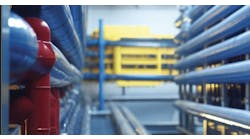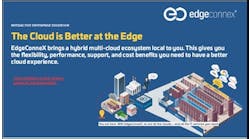As data centers evolve, robust cable management is imperative. It not only optimizes data flow and equipment reliability but also maintains data integrity. Our exploration delves into these strategies' multidimensional benefits, from preventing mishaps and ensuring equipment dependability to minimizing downtime and prioritizing personnel safety. This examination underscores cable management's critical role in shaping efficient, secure, and adaptable data centers amidst technological advancement.
Data centers are rapidly expanding due to the widespread integration of digital technologies across industries. Once niche hubs, they now play a pivotal role in modern economies, managing extensive data processing, storage, and distribution. This growth offers both opportunities and challenges, notably in the realm of cable management. These challenges include:
Ensuring Efficiency and Organization: The sprawling network of cables within a data center serves as the lifeblood of modern businesses, enabling the seamless flow of data and power. However, this intricate web of cables can quickly turn into a perplexing labyrinth without meticulous management. A well-organized cable infrastructure is not merely a cosmetic feature; it is an essential part of operational excellence within data centers.
Preventing Downtime and System Failures: Disorganized cables within data centers extend beyond mere aesthetics; they harbor substantial risks with far-reaching consequences for core operations and financial stability. When issues or system failures arise, the complex tangle of poorly managed cables complicates root cause identification, consuming valuable time and resources. This confusion hinders efficient troubleshooting, prolongs mean time to repair, and escalates downtime-related costs, including financial losses and potential penalties. Operational disruption, reduced productivity, missed deadlines, data loss, and compliance issues further underscore the critical importance of effective cable labeling and organization in minimizing these risks and enhancing operational resilience.
Maintenance and Scalability: In an era of rapid technological advancements, data centers must adapt and expand continually. A well-organized cable infrastructure eases the burden of scalability. Whether integrating new hardware, making changes to configurations, or expanding capacity, the organized layout minimizes disruptions and ensures reliability throughout the process.
Safety Hazards and Accessibility Issues: Safe and ergonomic work environments are essential for data center staff. Tangled cables not only compromise safety but can also hinder efficient work practices, leading to operational inefficiencies. Disorganized cables strewn across trays pose a significant pulling hazard for data center personnel.
Energy Efficiency: A well-organized cable infrastructure also contributes to energy efficiency. Proper airflow management and the elimination of cable clutter can reduce the energy required for cooling, leading to substantial cost savings over time.
Proactive solutions, like those offered by Cablofil, are designed to enhance data centers. By utilizing multiple layers of trays, each restricted to a maximum width of 24 inches, owner-operators can realize a multitude of benefits that enhance the overall efficiency and effectiveness of their data center operations. These advantages encompass easier access for performing repairs and upgrades, straightforward accommodation of new equipment and cables, as well as the effective routing and segregation of cables. This not only prevents congestion but also maintains proper airflow.
Most importantly, these types of solutions prioritize safety, aligning data centers with industry standards and regulations for cable management and workplace safety. Well-organized cables, limited to 24" widths and utilizing multiple layers, ensure swift equipment access during emergencies, minimizing damages and maintaining operational continuity.
In the ever-changing landscape of data centers, the importance of effective cable management and optimal tray widths remains a foundational element for achieving operational excellence. As data centers continue to evolve and expand, the role of cable management becomes increasingly critical. It's a responsibility that requires unwavering attention, especially considering the growing scale and agility of these facilities. To maintain the integrity and long-term functionality of their essential infrastructure, data center operators are strongly encouraged to prioritize meticulous cable management practices. Embracing innovative solutions like those offered by Legrand Cablofil emerges as a vital strategy, ensuring the seamless functionality and durability of their critical operations well into the future.
Cablofil solutions play a pivotal role in advancing data center expansion and "future-proofing." With the escalating demand for data storage and processing capacity, data center operators must anticipate the necessity for expanded infrastructure. Future-proof cable management involves seamless integration of new hardware and cables during data center expansion, where proper cable organization is central to efficient scalability efforts. As data center layouts and equipment configurations evolve, adaptable cable management solutions become essential to ensure smooth transitions without disrupting ongoing operations. Cablofil's commitment to innovation enables tailored solutions that cater to the unique needs of modern data centers, facilitating optimal cable management aligned with specific requirements.
Bob Crain is Director Marketing/Product Development at Legrand/Cablofil. Contact them to learn more about Cablofil's zinc-plated wire mesh cable tray.






